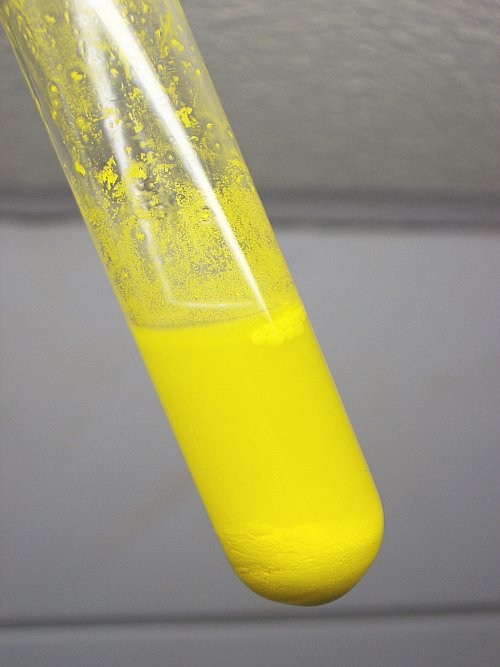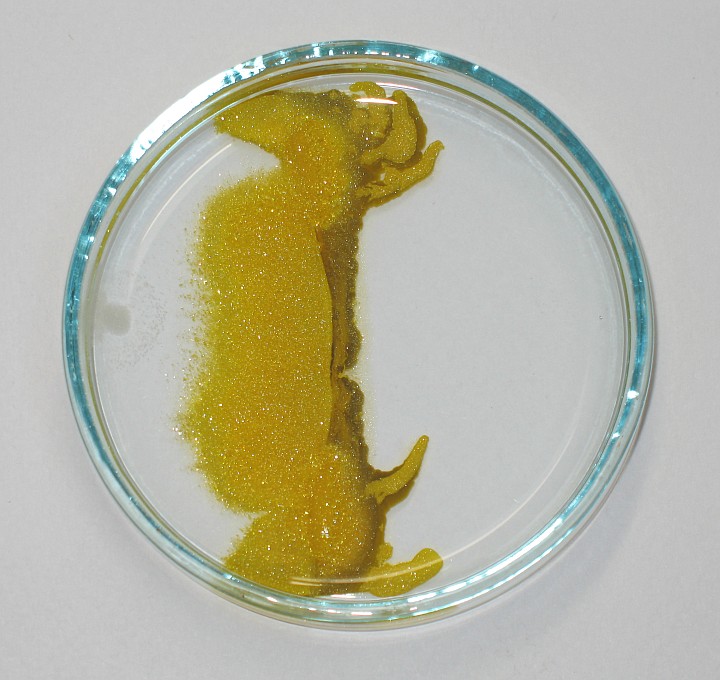


Formation of lead(II) iodide in petri dish
Formation of lead(II) iodide from a soluble iodide and a soluble lead(II) salt is a nice demonstration experiment. Two colorless solutions can form a really bright yellow precipitate.

A nice variation on this nice experiment can be made by using a petri dish with distilled water, and putting a small quantity of solid lead nitrate in the water on one side of the petri dish and putting a small quantity of solid potassium iodide on the other side of the dish. This must be done very carefully, such that the water is not disturbed too much.
The lead nitrate and the potassium iodide slowly dissolve and diffuse through the water, until they meet each other. At the place where they meet, a nice band of crystalline solid lead(II) iodide is formed. This experiment also shows that lead nitrate diffuses through the water more slowly than potassium iodide. The picture below shows a petri dish which already had lead nitrate and potassium iodide added to the water several minutes before making the picture. The lead nitrate was added at the left (some of the solid still can be seen), and the potassium iodide was added at the right (all of it has dissolved).

At the side, where the potassium iodide was added, a brown rim is formed. The nature of this brown rim is not known to me. Normally, lead iodide is brightly yellow. The brown material most likely is due to oxidized iodide, giving rise to brown iodine.
This experiment is particularly nice if the process of formation of the yellow band is watched. A video with a total length of 15 minutes was made of this process. An excerpt of 2:30 from this video is shown in real time. A 15-speed video was created, based on the full 15 minute video. Watching this takes 1 minute, but it shows the reaction at 15 times the real time speed:
Download size of both videos is approximately 2.5 Mbyte.